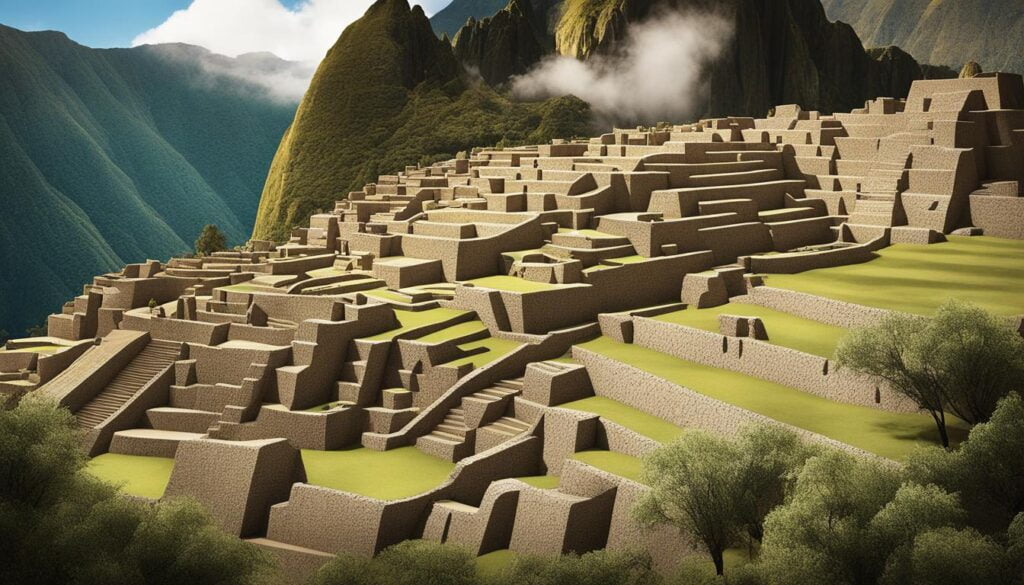Lost Cities and Forgotten Civilizations: Exploring Peru’s Archaeological Sites
Peru’s history goes back way before the Incas. Besides Machu Picchu, there are many other “lost cities” across Peru waiting to be found. Start your journey in Lima. There, you’ll find three ancient cities that were around before the Inca Empire. These cities, part of the Lima Culture, include Huaca Pucllana and Parque de las Leyendas, which is now a zoo but was once home to adobe walls and pyramids.
What do these Peru Archaeological Sites keep hidden? What can they teach us about Peru’s ancient past? Let’s explore these sites together and uncover the stories of Peru’s ruins, archaeology, and history.
Key Takeaways
- Peru’s ancient past extends far beyond the Inca Empire, with numerous “lost cities” and forgotten civilizations to explore.
- Iconic sites like Machu Picchu are just the tip of the iceberg, with archaeological treasures like Huaca Pucllana and Parque de las Leyendas in Lima.
- The Nazca Lines and other ancient wonders offer a glimpse into Peru’s rich history and the ingenuity of its people.
- Uncovering the secrets of Peru’s archaeological sites can reveal the diversity and complexity of its ancient civilizations.
- Exploring Peru’s forgotten past is an opportunity to appreciate the enduring legacy of these remarkable cultures.
Peru’s Ancient Wonders: Unveiling the Secrets of Lost Cities
Walking through ancient places in Peru, like Chan Chan, you feel awe. Chan Chan is the world’s biggest adobe city, covering about 10 square miles. Imagine walking in its world, with tall adobe walls all around you. The bright sun lights up everything, making the scene so big and mysterious. The Chimu people built this place after the Moche culture fell. While it seems endless and hot, there are oases here. These were places where ancient people could cool off and find watery life in the desert. Hiram Bingham compared finding Chan Chan to what the Spanish conquerors felt. It was a moment of great discovery.
Caral: The Grandfather of Peruvian Lost Cities
Caral sits between Lima and Chimbote along the coast. It’s considered Peru’s oldest city, dating back 5,000 years. At its peak, about 3,000 people lived here. This makes it as old as Egypt’s pyramids. Around the main city, there are 19 other pyramid sites. Research suggests more than 20,000 people might have lived in the area. Despite being found in 1905, we are still learning about Caral today. It’s a place where the old mysteries of Peru are slowly shared with the world.
Chachapoyas: The Mysterious Cloud People
In 1997, the world learned about the Chachapoyas, or “Cloud People.” They lived high above the Amazon jungle. It’s said that over 20,000 of them lived there. They are known for building forts and other structures from stone. The stones were often carved with human and animal designs. Not much is known about their way of life. They eventually joined the Inca Empire but were hit hard by new diseases. Robert Stevenson, a British man who came to the region in 1839, was perhaps the first westerner to see their ruins. The Chachapoyas left behind amazing cities that seem to float in the clouds.
Peru Archaeological Sites: Remnants of Illustrious Empires

In Peru, you can find hidden cities that are easy to miss, like Ollantaytambo in the Sacred Valley. This town is special because it’s an almost untouched place where the Inca people lived. It has its first roads, walls, and even aqueducts that were built hundreds of years ago. These show how the Inca Empire lived and built things every day.
Ollantaytambo is now a archaeological park. Within its boundaries are amazing Inca buildings like a fortress and temples. When you visit, it’s like going back in time to see how the Inca Empire once was.
Vilcabamba: The Last City of the Incas
Vilcabamba is a key place in Inca history. It became the last city of the empire. The leader Manco Inca started it as a safe place from the Spanish. It was hidden away near a river called Espiritu Pampa.
But the Spanish eventually found Vilcabamba. This marked the end of the Inca Empire. Though it’s not a secret city anymore, its story is still very much alive.
The Legendary Paititi: An Inca Treasure Trove Yet to be Discovered
Paititi is said to be a secret Inca city on the other side of the Andes. It’s somewhere close to where Peru, Bolivia, and Brazil meet. Stories tell of huge amounts of Inca gold hidden there.
Many have looked for Paititi over the years. But no one has found it yet. The search for Paititi is still something some people dream about today.
Conclusion: Peru, An Archaeological Paradise Awaiting Exploration
Peru is packed with treasures, showing off lost cities and forgotten civilizations that predate the Inca Empire. You can explore the enigmatic Chan Chan, the birthplace of civilization at Caral, and the Chachapoyas people. Then there’s Ollantaytambo, a town where the Incas still live today. These places shout out the cleverness, creativity, and variety of Peru’s past people.
Stories of the lost cities like Vilcabamba and the hidden Paititi grab our interest, waiting to be found by new adventurers. Peru offers so much to dig up from its history, allowing visitors to unveil its past secrets. This unravels the still-standing achievements of these amazing cultures.
With so many archaeological sites in Peru, the country’s ancient history becomes vivid. Each place pushes visitors to learn more about forgotten civilizations, offering a glimpse into the past. As researchers and travelers keep revealing Peru’s mysteries, its appeal as an archaeological paradise expands. This captivates people worldwide and fuels new discoveries.







